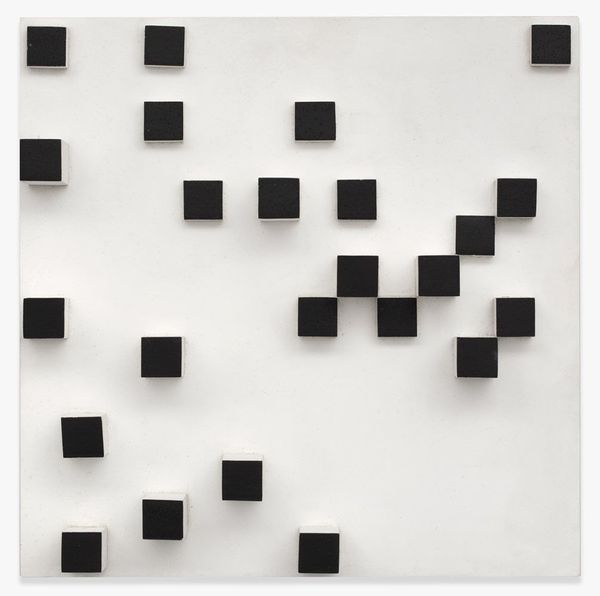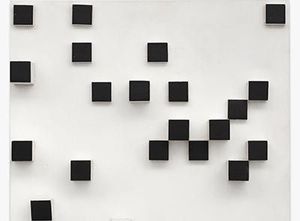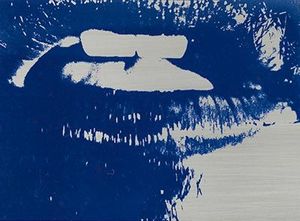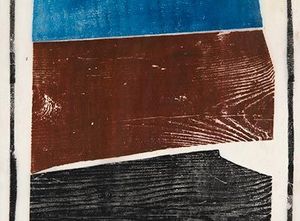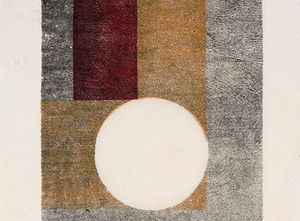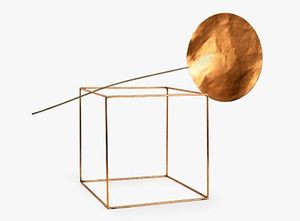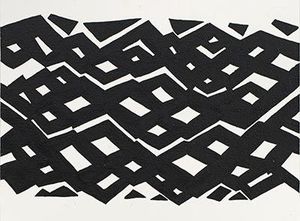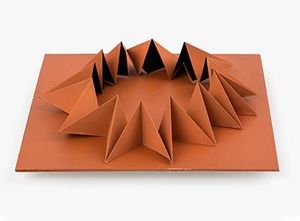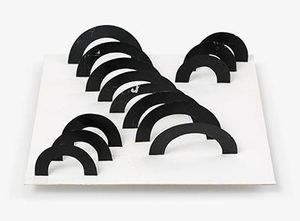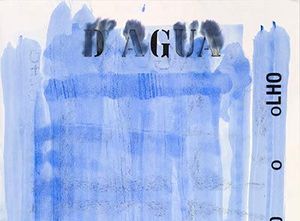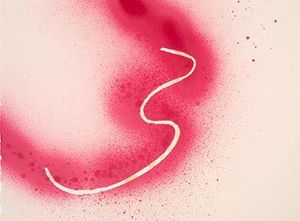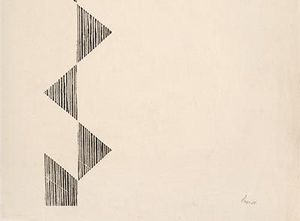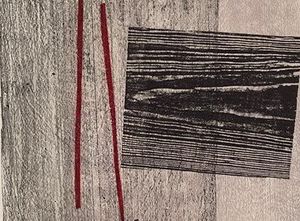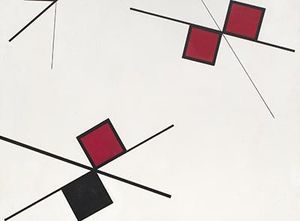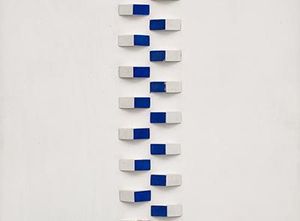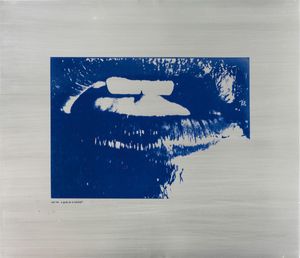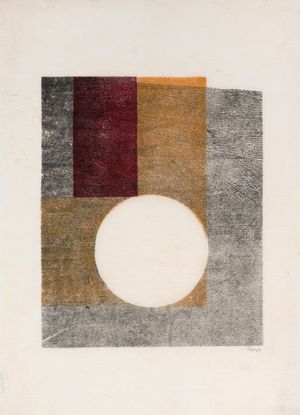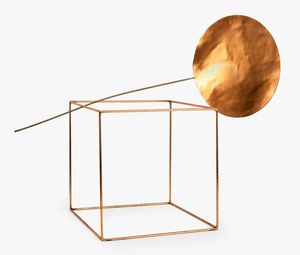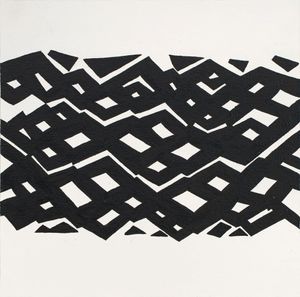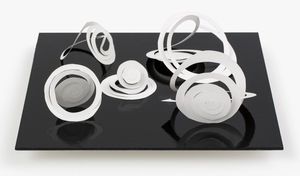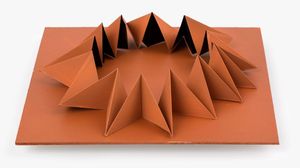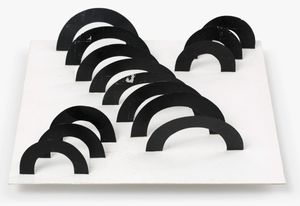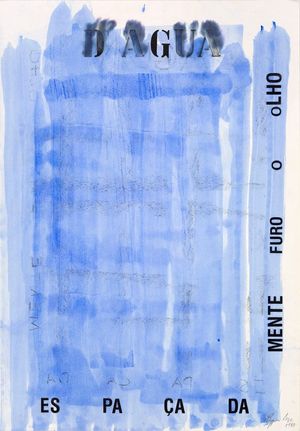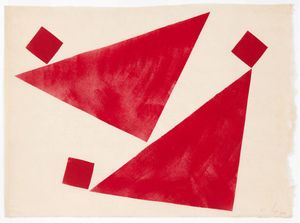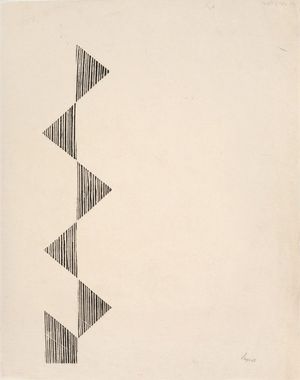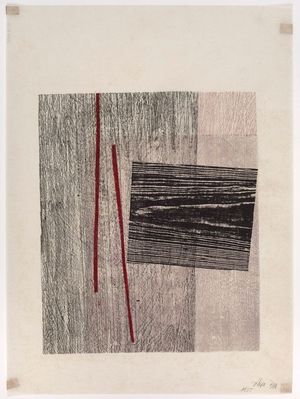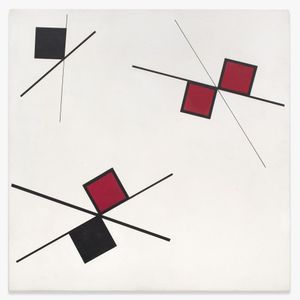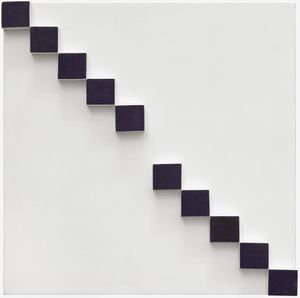One of the most relevant figures in the history of modern and contemporary art in Brazil, Lygia Pape worked in a variety of media, including painting, sculpture, printmaking, film, and performance art. She was known for her use of geometric shapes and vibrant colors, and for her exploration of the relationships between space, time, and the human body.
Pape was a member of the Grupo Frente from the early 1950s, alongside artists such as Hélio Oiticica, Lygia Clark, Franz Weissmann, and Ivan Serpa, playing a key role in the development of concretism. Her works from this period stand out for the artist's transgressive approach to abstraction and for her questioning of the excessively rationalist tendency of concretism, which turned to industrial materials and techniques. The famous series of prints Tecelares, produced between 1955 and 1959, demonstrates Pape’s approximation to handcraft, which opposed the rigid geometry of concrete art at the time. In these works, the geometric line both dominates and integrates the lines of the wood knot.
A pioneer in the creation of artist's books, Pape developed several series based on the book format, in which she explored the possibilities of creating narratives that could be physically manipulated or mentally reimagined by the viewers. These works began with Pape’s experiments with image and word, and later evolved into pure abstract compositions which the artist conceived as fragments of a story. One of these projects, entitled Book of Time, consists of 365 objects made of square pieces of wood which Pape would cut, reassemble, and paint with bright colors.
From the 1960s onwards, Pape deepened her research and experiments into the active role of the public in the creation of the work of art, also focusing on the sensory aspect of the artistic experience. She left the Grupo Frente and joined the Neo-Concrete movement. She carried out various video art projects, collaborated with Cinema Novo, and worked in graphic design, doing visual programming, and creating posters for films. The participatory aspect of her production takes center stage in works such as Divisor (1968), a huge piece of fabric with openings through which the participants put their heads, forming a large collective body united by the work.
Besides being an artist, Pape worked as a teacher at the Museu de Arte Moderna in Rio de Janeiro and at the Escola de Artes Visuais do Parque Lage, among other educational spaces. Her extensive record of exhibitions includes solo shows held since 1959. Her recent solo shows include the Tecelares series, held at the Art Institute of Chicago (2023); Lygia Pape: a Multitude of Forms, at the Metropolitan Museum of Art, New York (2017); and Lygia Pape: espaço imantado, presented at the Pinacoteca de São Paulo and Serpentine Gallery (2012) and Museo Nacional Centro de Arte Reina Sofia (2011). Her group shows include six editions of the Bienal Internacional de São Paulo, as well as exhibitions of historical relevance such as Nova Objetividade Brasileira (1967) and Projeto Construtivo Brasileiro na Arte: 1950-1962 (1977). Her works are part of major national and international collections such as the Hammer Museum Los Angeles; Tate Modern, London; MoMA, New York; Instituto Inhotim; Pinacoteca do Estado de São Paulo, among others.
